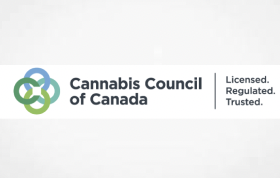Cannabis remains by far the most commonly consumed illicit drug in Europe. On this page, you can find the latest analysis of the drug situation for cannabis in Europe, including prevalence of use, treatment demand, seizures, price and potency, harms and more.
This page is part of the European Drug Report 2024, the EMCDDA’s annual overview of the drug situation in Europe.
Last update: 11 June 2024
Understanding the policy and practice implications of changes in Europe’s cannabis market remains a priority
Cannabis remains by far the most commonly consumed illicit drug in Europe. National surveys of cannabis use would suggest that, overall, an estimated 8 % of European adults (22.8 million aged 15 to 64) have used cannabis in the last year. However, both the level of use and trends in use reported in recent national data appear heterogeneous (see Prevalence and patterns of cannabis use, below). At the same time, there is an ongoing debate on how best to respond to the use of this drug, with some countries modifying their regulatory approach. We are also seeing significant developments in the cannabis market. Taken together, this all means that there remains a pressing need to understand better the potential harms associated with different patterns of cannabis consumption and the implications this raises for policy and practice.
There is a need to better understand what responses are effective
Around 1.3 % of adults in the European Union (3.7 million people) are estimated to be daily or almost daily users of cannabis, and this is the group most likely to experience problems associated with this drug. Cannabis use can cause or exacerbate a range of physical and mental health problems, including chronic respiratory symptoms, cannabis dependence and psychotic symptoms. In addition, studies have found that regular cannabis use can be associated with poorer educational achievement and an increased risk of involvement with the criminal justice system. Problems are most associated with early onset of use, high-potency products and more regular and long-term patterns of use.
There remains, however, a need to understand better the kinds of problems experienced by cannabis users, as well as what are appropriate referral pathways and effective treatment options for those with cannabis-related problems. Cannabis is reported to be responsible for more than one third of all drug treatment admissions in Europe. This finding is difficult to interpret, in part because of the wide variety of interventions provided to cannabis users, which may include brief interventions or directive referrals from the criminal justice system. Further work is needed to understand better the kind of services offered to those with cannabis problems. However, the information that does exist would suggest that psychosocial treatments, such as cognitive behavioural therapy, are commonly offered and that e-health (online) interventions appear to be increasingly available.
Evaluating the risk of harm in this area is complicated by the apparently increasing range of cannabis-based products potentially available to consumers, which can include edibles, high-potency products and various derivatives. This diversity can have implications for the risk of an individual experiencing problems with their cannabis use and is therefore an area that requires greater research and regulatory attention.
Overall, the number of people reported as entering treatment for cannabis problems for the first time remained relatively stable until 2019, before declining during the pandemic, and not returning to pre-pandemic levels in most EU Member States by 2022 (see Treatment entry for cannabis use, below). A caveat here is that data quality and coverage issues mean that this observation must be interpreted with caution.
Seizures indicate that trafficking routes may be diversifying
Seizures of cannabis products overall continued to be at historically high levels in 2022, indicating the high availability of this drug (see Cannabis market data, below). However, the total quantity of cannabis resin seized in the European Union dropped significantly, largely due to a decrease in seizures reported by Spain. It is possible that this may reflect an adaptation in supply routes by those involved in trafficking cannabis resin from North Africa to Europe as a response to anti-trafficking measures taken by Spanish authorities. In this context, it is also interesting to note that since 2019 the volume of herbal cannabis seized has increased significantly in Spain. In 2022, Spain accounted for 69 % of all resin seized, 47 % of all herbal cannabis seized, and 81 % of the total number of cannabis plants reported seized in the European Union, underlining the significant role played by Spain, both as a transit country for cannabis trafficking and as a production area. However, it is important to note that significant cannabis production also takes place elsewhere in the European Union. Recent large seizures highlight the role Spain continues to play as a transit country for resin intended for the European market. In 2023, for example, Spanish authorities seized 22 tonnes of cannabis resin concealed in fake tomato packaging suspected of being destined for trafficking to France (see Figure 2.1)
Read more on cannabis here
https://www.emcdda.europa.eu/publications/european-drug-report/2024/cannabis_en
FULL REPORT
31813_en


















